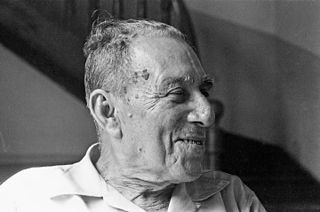
The Indigenous peoples in Brazil are the peoples who lived in Brazil before European contact around 1500 and their descendants. Indigenous peoples once comprised an estimated 2,000 district tribes and nations inhabiting what is now Brazil. The 2010 Brazil census recorded 305 ethnic groups of Indigenous people who spoke 274 Indigenous languages; however, almost 77% speak Portuguese.

Uncontacted peoples are groups of Indigenous peoples living without sustained contact with neighbouring communities and the world community. Groups who decide to remain uncontacted are referred to as indigenous peoples in voluntary isolation. Legal protections make estimating the total number of uncontacted peoples challenging, but estimates from the Inter-American Commission on Human Rights in the UN and the nonprofit group Survival International point to between 100 and 200 uncontacted tribes numbering up to 10,000 individuals total. A majority of uncontacted peoples live in South America, particularly northern Brazil, where the Brazilian government and National Geographic estimate between 77 and 84 tribes reside.

The Asháninka or Asháninca are an indigenous people living in the rainforests of Peru and in the State of Acre, Brazil. Their ancestral lands are in the forests of Junín, Pasco, Huánuco and part of Ucayali in Peru.

Panoan is a family of languages spoken in western Brazil, eastern Peru, and northern Bolivia. It is possibly a branch of a larger Pano–Tacanan family.

The Shipibo-Conibo are an indigenous people along the Ucayali River in the Amazon rainforest in Peru. Formerly two groups, they eventually became one tribe through intermarriage and communal ritual and are currently known as the Shipibo-Conibo people.

The Muras are an indigenous people who live in the central and eastern parts of Amazonas, Brazil, along the Amazon river from the Madeira to the Purus. They played an important part in Brazilian history during colonial times and were known for their quiet determination and subsequent resistance to the encroaching Portuguese culture. Formerly a powerful people, they were defeated by their neighbors, the Munduruku, in 1788.
The Cashibo or Carapache are an indigenous people of Peru. They live near the Aguaytía, San Alejandro, and Súngaro Rivers. The Cashibo have three subgroups, that are the Cashiñon, Kakataibo, and Ruño peoples. They mainly live in five villages.

The Bora are an Indigenous tribe of the Peruvian, Colombian, and Brazilian Amazon, located between the Napo, Putumayo and Caqueta rivers.

The Matsés or Mayoruna are an indigenous people of the Peruvian and Brazilian Amazon. Their traditional homelands are located between the Javari and Galvez rivers. The Matsés have long guarded their lands from other indigenous tribes and struggle with encroachment from illegal logging practices and poaching.

Matsés, also referred to as Mayoruna in Brazil, is an Indigenous language utilized by the inhabitants of the border regions of Brazil-Peru. A term that hailed from Quechua origin, Mayoruna translates in English to mayu = river; runa = people. Colonizers and missionaries during the 17th century used this term to refer to the Indigenous peoples that occupied the lower Ucayali Region, Upper Solimões and Vale do Javari.

The Indigenous peoples of Peru or Native Peruvians comprise a large number of ethnic groups who inhabit territory in present-day Peru. Indigenous cultures developed here for thousands of years before the arrival of the Spanish in 1532.
Amahuaca is an indigenous language of the Amazon Basin in Perú and Brazil. It is also known as Amawaka, Amaguaco, Ameuhaque, Ipitineri, and Sayaco. Amahuaca is a Panoan language that is believed to be closely related to Cashinahua and Yaminawa. There around 220 speakers in Brazil, and around 328 speakers in Peru.
Vale do Javari is one of the largest indigenous territories in Brazil, encompassing 85,444.82 km2 (32,990 mi2) – an area larger than Austria. It is named after the Javari River, the most important river of the region, which since 1851 has formed the border with Peru. It includes much of the Atalaia do Norte municipality as well as adjacent territories in the western section of Amazonas state. Besides the Javari it is transected by the Pardo, Quixito, Itaquai and Ituí rivers.
Endocannibalism is a practice of cannibalism in one's own locality or community. In most cases this refers to the consumption of the remains of the deceased in a mortuary context.

The Amazon rubber cycle or boom was an important part of the socioeconomic history of Brazil and Amazonian regions of neighboring countries, being related to the commercialization of rubber and the genocide of indigenous peoples.
The Nomole or Cujareño people, also known as the Mashco Piro, are an indigenous tribe of nomadic hunter-gatherers who inhabit the remote regions of the Amazon rainforest. They live in Manú National Park in the Madre de Dios Region in Peru. They have actively avoided contact with non-native peoples.
The Harakmbut are indigenous people in Peru. They speak the Harakmbut language. An estimated 2,000 Harakmbut people live in the Madre de Dios Region near the Brazilian border in the Peruvian Amazon.

Manuel Córdova-Rios was a vegetalista (herbalist) of the upper Amazon, and the subject of several popular books.

The Las Piedras River is a major tributary of the Madre de Dios River in the southeast Peruvian Amazon.

Carlos Scharff was a Peruvian rubber baron of German descent who was active along the Upper Purus and Las Piedras rivers during the Amazon rubber boom in Peru. He also served for many years during his youth as an agent for the Belgian consulate in Brazil.













